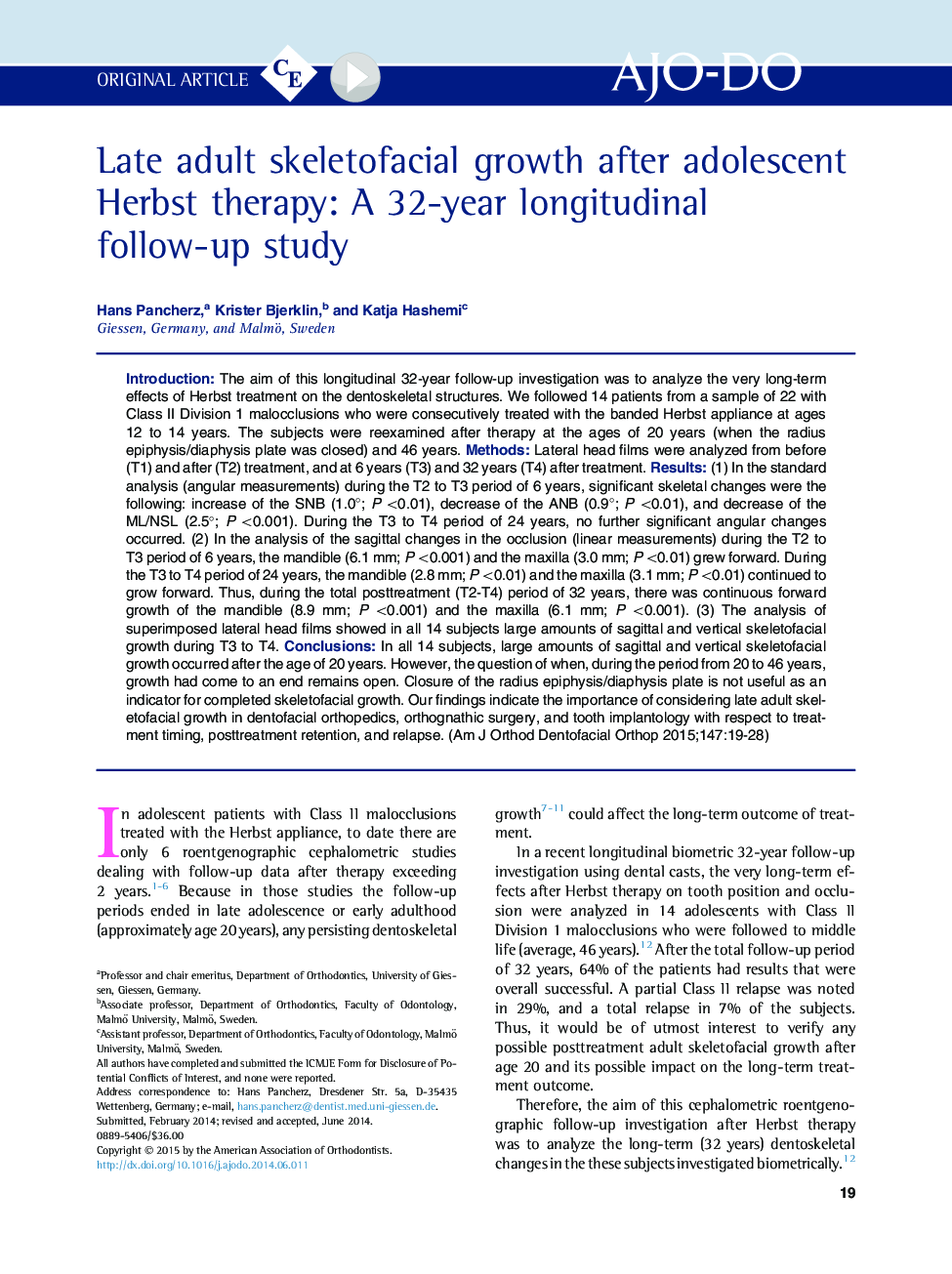| Article ID | Journal | Published Year | Pages | File Type |
|---|---|---|---|---|
| 3116143 | American Journal of Orthodontics and Dentofacial Orthopedics | 2015 | 10 Pages |
•Sagittal and vertical skeletofacial growth occurs after the age of 20 years.•Closure of the radius epiphysis/diaphysis plate does not mean that skeletal growth has ended.•Late adult skeletofacial growth should be considered when planning treatment.
IntroductionThe aim of this longitudinal 32-year follow-up investigation was to analyze the very long-term effects of Herbst treatment on the dentoskeletal structures. We followed 14 patients from a sample of 22 with Class II Division 1 malocclusions who were consecutively treated with the banded Herbst appliance at ages 12 to 14 years. The subjects were reexamined after therapy at the ages of 20 years (when the radius epiphysis/diaphysis plate was closed) and 46 years.MethodsLateral head films were analyzed from before (T1) and after (T2) treatment, and at 6 years (T3) and 32 years (T4) after treatment.Results(1) In the standard analysis (angular measurements) during the T2 to T3 period of 6 years, significant skeletal changes were the following: increase of the SNB (1.0°; P <0.01), decrease of the ANB (0.9°; P <0.01), and decrease of the ML/NSL (2.5°; P <0.001). During the T3 to T4 period of 24 years, no further significant angular changes occurred. (2) In the analysis of the sagittal changes in the occlusion (linear measurements) during the T2 to T3 period of 6 years, the mandible (6.1 mm; P <0.001) and the maxilla (3.0 mm; P <0.01) grew forward. During the T3 to T4 period of 24 years, the mandible (2.8 mm; P <0.01) and the maxilla (3.1 mm; P <0.01) continued to grow forward. Thus, during the total posttreatment (T2-T4) period of 32 years, there was continuous forward growth of the mandible (8.9 mm; P <0.001) and the maxilla (6.1 mm; P <0.001). (3) The analysis of superimposed lateral head films showed in all 14 subjects large amounts of sagittal and vertical skeletofacial growth during T3 to T4.ConclusionsIn all 14 subjects, large amounts of sagittal and vertical skeletofacial growth occurred after the age of 20 years. However, the question of when, during the period from 20 to 46 years, growth had come to an end remains open. Closure of the radius epiphysis/diaphysis plate is not useful as an indicator for completed skeletofacial growth. Our findings indicate the importance of considering late adult skeletofacial growth in dentofacial orthopedics, orthognathic surgery, and tooth implantology with respect to treatment timing, posttreatment retention, and relapse.
